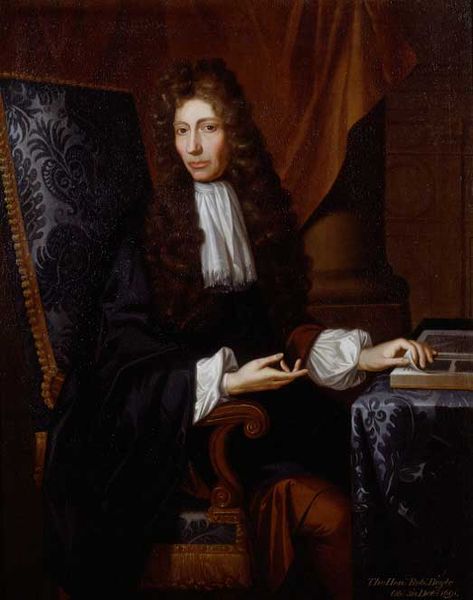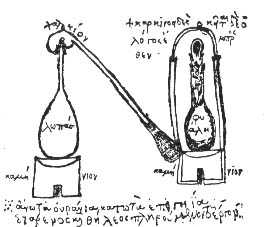| << Chapter < Page | Chapter >> Page > |

Arsenic sulfides and oxides were known since ancient times. Zosimos ( ca . 300 AD) describes roasting sandarach (realgar, α-As 4 S 4 ) to obtain cloud of arsenious oxide (As 2 O 3 ) that he reduced to metallic arsenic ( [link] ).

Antimony(III) sulfide, Sb 2 S 3 was known as early as 3000 BC. Pastes of Sb 2 S 3 powder in fat were used as eye cosmetics in the Middle East. An artifact made of antimony dating to about 3000 BC was found at Tello (part of present-day Iraq), and copper objects plated with antimony from 2500 - 2200 BC have been found in Egypt. The first European description of a procedure for isolating antimony is in the book De la pirotechnia by Vannoccio Biringuccio (1480 - 1539).
Since bismuth was known in ancient times, no one person is credited with its discovery. However, the French chemist Claude François Geoffroy (1729 - 1753) demonstrated in 1753 that this metal is distinct from lead and tin.
The abundance of the Group 15 elements is given in [link] .
| Element | Terrestrial abundance (ppm) |
| N | 25 (Earth’s crust), 5 (soil), 0.5 (sea water), 78 x 10 4 (atmosphere) |
| P | 1000 (Earth’s crust), 0.65 (soil), 60 x 10 -3 (sea water), trace (atmosphere) |
| As | 1.5 (Earth’s crust), 10 (soil), 16 x 10 -3 (sea water), trace (atmosphere) |
| Sb | 0.2 (Earth’s crust), 1 (soil), 0.3 x 10 -3 (sea water) |
| Bi | 48 x 10 -3 (Earth’s crust), 0.25 (soil), 400 x 10 -6 (sea water) |
The naturally abundant isotopes of the Group 15 elements are listed in [link] .
| Isotope | Natural abundance (%) |
| Nitrogen-14 | 99.634 |
| Nitrogen-15 | 0.0366 |
| Phosphorus-31 | 100 |
| Arsenic-75 | 100 |
| Antimony-121 | 57.36 |
| Antimony-123 | 42.64 |
| Bismuth-209 | 100% |
Two radioactive isotopes of phosphorus ( 32 P and 33 P) have half-lives that make them useful for scientific experiments (14.262 and 25.34 days, respectively). 32 P is a β-emitter (1.71 MeV) and is used to produce radiolabeled DNA and RNA probes. Due to the high energy of the β particles which can penetrate skin and corneas, and because any 32 P ingested, inhaled, or absorbed is incorporated into bone and nucleic acids extreme care needs to be taken in handling. The lower energy β particles emitted from 33 P (0.25 MeV) make it useful for applications such as DNA sequencing.
While bismuth is traditionally regarded as the element with the heaviest stable isotope, 209 Bi, it had long been suspected to be unstable on theoretical grounds. In 2003 researchers at the Institut d'Astrophysique Spatiale in Orsay, France, measured the alpha emission half-life of 209 Bi to be 1.9 × 10 19 years, over a billion times longer than the current estimated age of the universe!
Nitrogen is the largest constituent of the Earth's atmosphere (78.082% by volume, 75.3% by weight). It is created by fusion processes in stars, and is estimated to be the 7 th most abundant element by mass in the universe. Industrial gas produced is by the fractional distillation of liquid air, or by mechanical means using gaseous air (i.e., pressurized reverse osmosis membrane or pressure swing adsorption). Commercial nitrogen is often a byproduct of air processing for industrial concentration of oxygen for steelmaking, etc.

Notification Switch
Would you like to follow the 'Chemistry of the main group elements' conversation and receive update notifications?